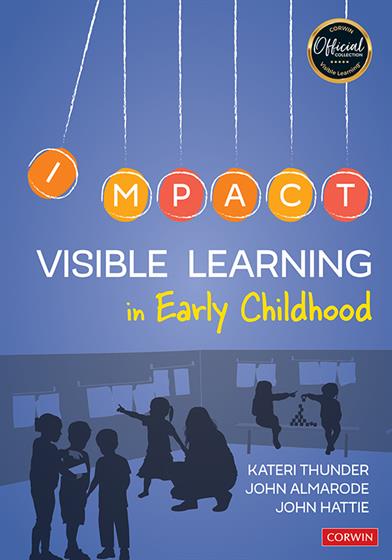List of Videos
Acknowledgments
About the Authors
INTRODUCTION
WHAT WORKS BEST
VISIBLE LEARNING
THE POTENTIAL FOR IMPACT
WHAT WORKS BEST WHEN
HOW THIS BOOK WORKS
CHAPTER 1. TEACHING WITH CLARITY IN EARLY CHILDHOOD
FOUR-YEAR-OLDS AT WORK
VISIBLE LEARNERS
TEACHER CLARITY
SURFACE, DEEP, AND TRANSFER LEARNING
PROFILES OF FIVE EDUCATORS
INSIDE MS. DAVIS’S DISTANCE LEARNING CLASSROOM
CHAPTER 2. VISIBLE LEARNING IN EARLY CHILDHOOD PLAYFUL LEARNING
EFFECTIVE PLAYFUL LEARNING IN EARLY CHILDHOOD
MS. DEMCHAK AND SORTING
MS. BULLOCK AND OCCUPATIONS
MR. HEATON AND ANIMAL HABITATS
MS. DAVIS AND DISTANCE PLAYFUL LEARNING
TIPS AND CONSIDERATIONS FOR PLAYFUL LEARNING
CHAPTER 3. VISIBLE LEARNING IN EARLY CHILDHOOD MATHEMATICS
EFFECTIVE MATHEMATICS LEARNING IN EARLY CHILDHOOD
MS. DEMCHAK AND NUMBERS
MS. BULLOCK AND MEASUREMENT
MR. HEATON AND GEOMETRY
MS. DAVIS AND DISTANCE LEARNING IN MATHEMATICS
MATHEMATICS AND PLAYFUL LEARNING
CHAPTER 4. VISIBLE LEARNING IN EARLY CHILDHOOD LITERACY
EFFECTIVE LITERACY LEARNING IN EARLY CHILDHOOD
MS. DEMCHAK AND OUR NAMES
MS. BULLOCK AND LISTS
MR. HEATON AND ANANSI THE TRICKSTER SPIDER
MS. DAVIS AND DISTANCE LEARNING IN LITERACY
LITERACY AND PLAYFUL LEARNING
CHAPTER 5. VISIBLE LEARNING AND UNDERSTANDING THE WORLD IN EARLY CHILDHOOD
EFFECTIVE LEARNING TO UNDERSTAND THE WORLD IN EARLY CHILDHOOD
MS. DEMCHAK AND STEM CHALLENGES
MS. BULLOCK AND BEING A SCIENTIST
MR. HEATON AND MAPS
MS. DAVIS AND DISTANCE LEARNING TO UNDERSTAND THE WORLD
UNDERSTANDING THE WORLD AND PLAYFUL LEARNING
CHAPTER 6. VISIBLE LEARNING IN EARLY CHILDHOOD SOCIAL AND EMOTIONAL DEVELOPMENT
EFFECTIVE SOCIAL AND EMOTIONAL DEVELOPMENT IN EARLY CHILDHOOD
MS. DEMCHAK AND PERSPECTIVES
MR. HEATON AND GOAL SETTING
MS. DAVIS AND DISTANCE SOCIAL-EMOTIONAL LEARNING
SOCIAL AND EMOTIONAL DEVELOPMENT THROUGHOUT THE DAY
CHAPTER 7. VISIBLE LEARNING IN EARLY CHILDHOOD CREATIVE ARTS AND MOTOR SKILL DEVELOPMENT
EFFECTIVE ARTS AND MOTOR LEARNING IN EARLY CHILDHOOD
MS. DEMCHAK AND FAMILY PORTRAITS
MS. BULLOCK AND STORYTELLING
MS. DAVIS AND DISTANCE LEARNING IN ART, MUSIC, AND MOTOR SKILLS
ARTS AND MOTOR DEVELOPMENT IN PLAYFUL LEARNING
CHAPTER 8. KNOWING YOUR IMPACT: EVALUATING LEARNING PROGRESS
VISIBLE LEARNERS
EFFECTIVELY COMMUNICATING CLARITY FOR VISIBLE LEARNING
ENGAGING AND RIGOROUS TASKS FOR VISIBLE LEARNING
FORMATIVE EVALUATION FOR VISIBLE LEARNING
FEEDBACK FOR VISIBLE LEARNING
MS. DAVIS AND STUDENT-LED CONFERENCES IN DISTANCE LEARNING
CONCLUSION
Appendix: Effect Sizes
References
Index




